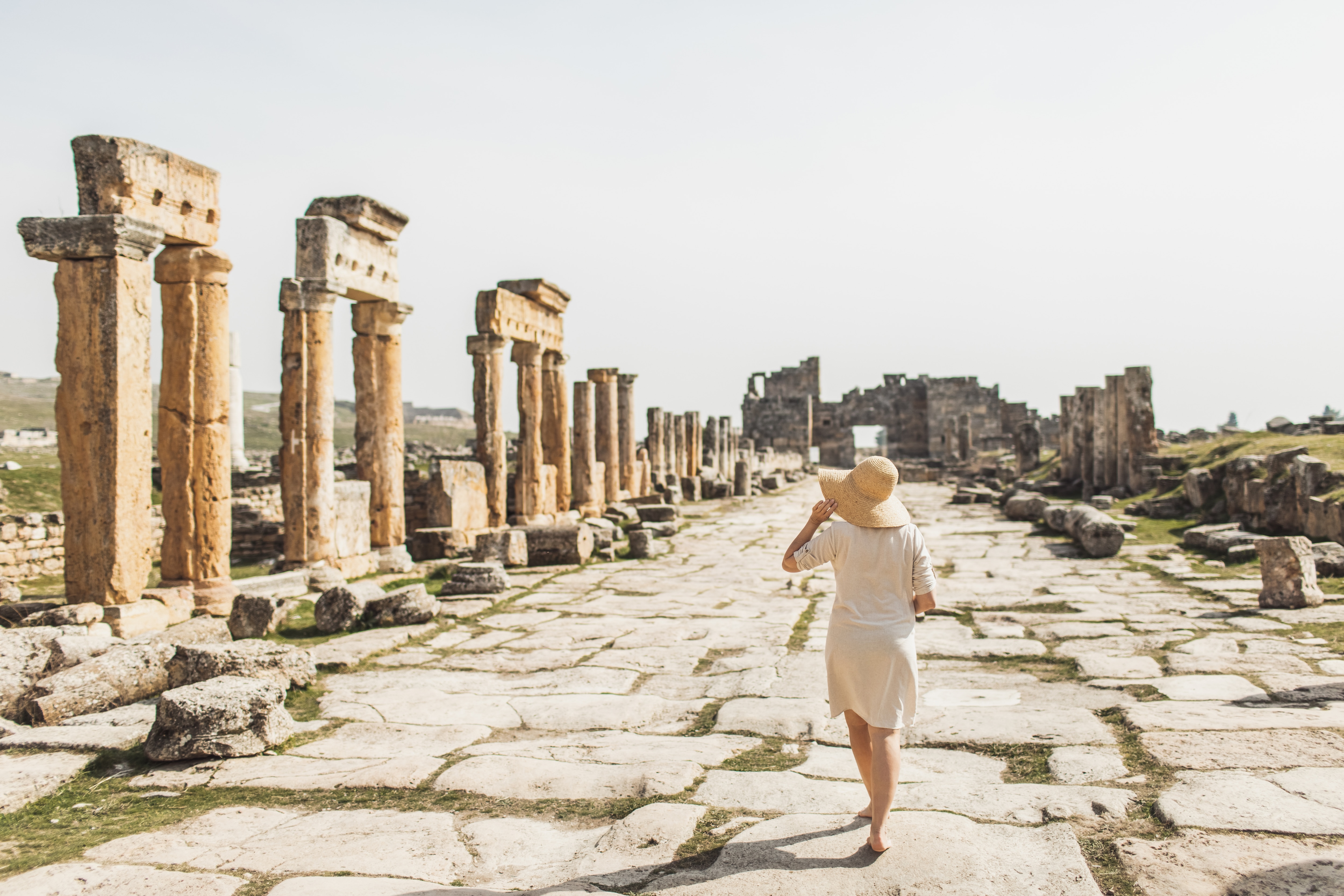 Unlock the Summer with Enterprise
Unlock the Summer with Enterprise
Hire a car with Enterprise this summer and discover more of what Greece has to offer. From secluded beaches and local markets to charming hidden villages off the beaten track, unlock your holiday with Enterprise.
ROAD TRIP IDEAS
Road trip idea: Cape Sounion
Apart from Athens, Greece is packed with stunning areas of historical interest and picturesque surroundings.
With your Enterprise Car rental you can drive over to Cape Sounio, stopping off at viewpoints and beaches along the way. Sounio is the perfect day trip from Athens, as you can admire the beauty of the Athenian coast and experience the amazing Temple of Poseidon. It is the ideal place to get away from the ciry, relax on the coast and enjoy the picturesque view. You can learn all about the importance of Cape Sounion in Greek mythology and experience a great sunset over the Aegean Sea.
The Temple of Poseidon is an ancient Greek temple on Cape Sounion, Greece, dedicated to the god Poseidon. There is evidence of the establishment of sanctuaries on the cape from as early as the 11th century BC Sounion’s most prominent temples, the Temple of Athena and the Temple of Poseidon, are however not believed to have been built until about 700 BC, and their kouroi (freestanding Greek statues of young men) date from about one hundred years later. The material and size of the offerings at the Temple of Poseidon indicate that it was likely frequented by members of the elite and the aristocratic class.
The Greeks considered Poseidon to be the "master of the sea". Given the importance to Athens of trade by sea and the significance of its navy in its creation and survival during the fifth century, Poseidon was of a particular relevance and value to the Athenians.
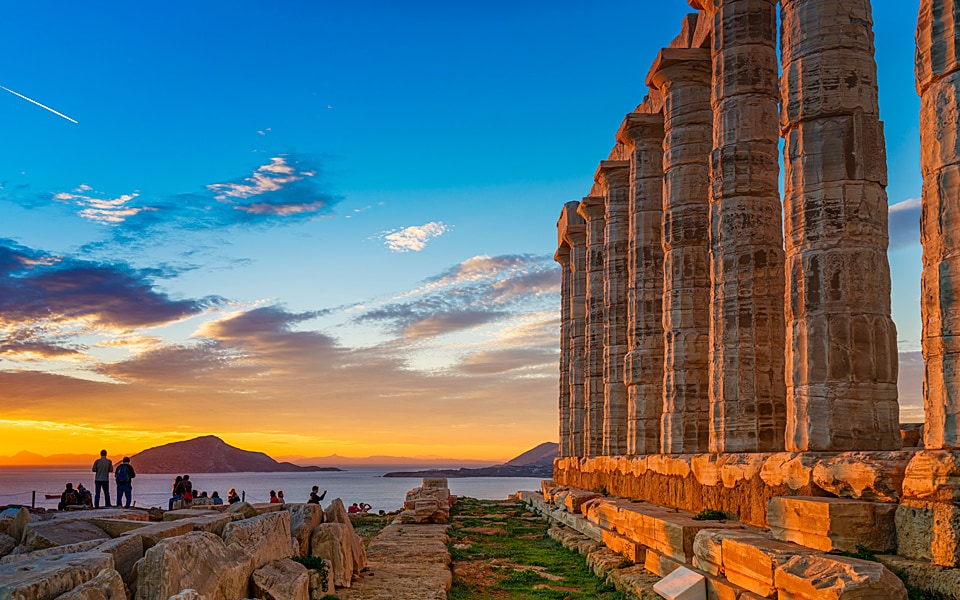
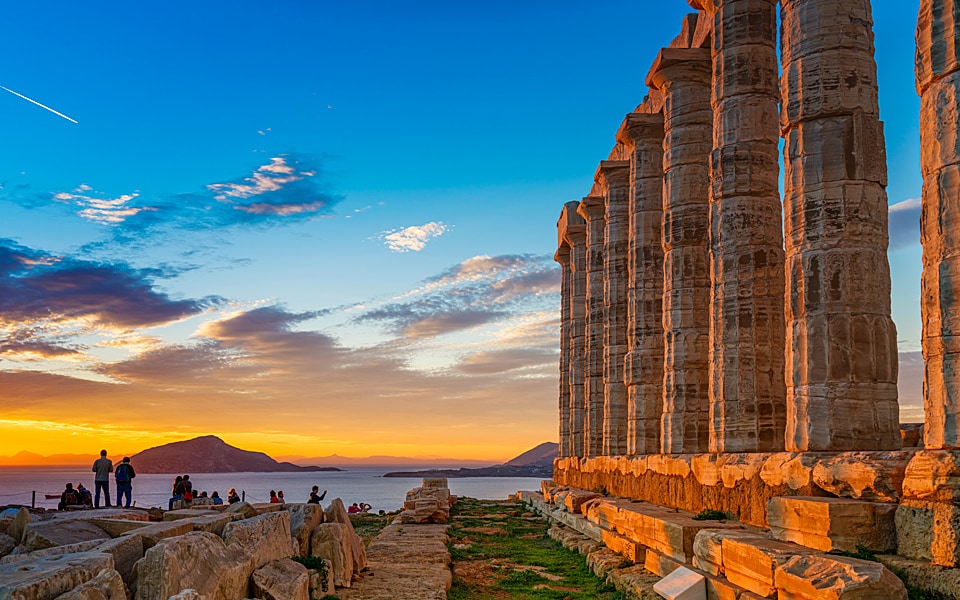
Road trip idea: Delphi
If you are thinking of travelling around Greece at your own leisure, the best option is to hire an Enterprise Car! To get to Delphi from Athens, take the freeway E75 to Lamia for approximately 100 kilometres, take the exit Kastro and follow the signs to Levadia. Cut across Aráchova, a pretty mountainous village, and keep on the same road that will lead you to Delphi. You can combine your trip to Delphi with Meteora.
During the ancient classical world, Delphi was a prominent Greek sanctuary that attracted thousands of pilgrims every year. Countless travellers visited the town in search of advice from Pythia, the High Priestess of the Temple of Apollo.
It is believed that the Pythia would take substances to enter into a trance state and talk in gibberish, which would then be interpreted by priests into prophecies. Delphi was once the most important religious sanctuary in the ancient classical world.
As well as exploring the town, strolling through its streets, discovering the pretty little shops and enjoying the marvellous landscape from its many panoramic bars, there are numerous things to do in Delphi. Two must-see attractions:
Archaeological site
The highlight of Delphi is the ancient buildings of the sanctuary including the Tholos of Delphi, the Temple of Apollo, discovered in 1892, the theatre with a seating capacity of 5,000 people, and the Stadium of Delphi, near the theatre and where the Pythian Games were held.
Delphi Archaeological Museum
The Delphi Archaeological Museum is one of the best archaeological museums in Greece. The collection’s most valuable artefact is the Charioteer of Delphi. This ancient bronze statue was designed to celebrate a victory in the Pythian Games of 478 BC or 474 BC.
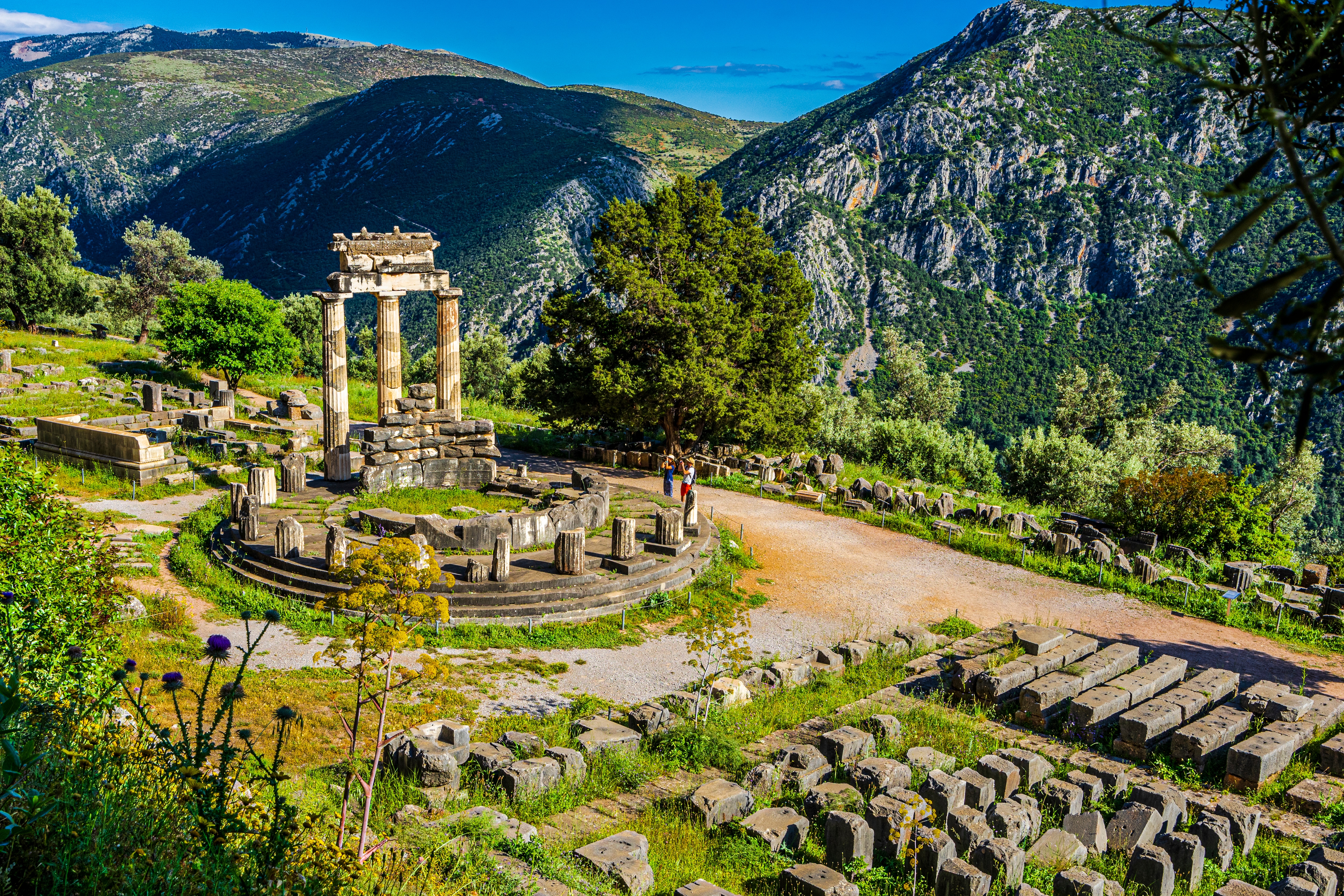

Road trip idea: Meteora
You can combine your trip to Delphi with Meteora. Meteora is situated in the center of Greece and is a large rock home to breathtaking monasteries. It is one of the most particular places in Greece as it consists of a truly unique geological phenomenon in the world.
To get to Meteora from Athens by your car rental, take the freeway E75 and head to Lamia-Karditsa-Trikala-Kalambaka. It'll take around 4 hours and 30 minutes (375 km away).
Driving to Kalampaka city, reaching Meteora nothing can prepare you for the awe of the first contact with this exceptional scenery.
Meteora in Greek means “place suspended in the air”, a phrase that explains perfectly what this site is. Meteora is a group of large sandstone rocks that were formed below sea level over 30 million years ago. This fascinating formation chiseled throughout the centuries was made visible when the seabed was pushed upwards.
Meteora is not only famous for its large slabs, what makes it even more fascinating are the various monasteries that were built on top of its peaks. The height of the rocks and their impressive views were the reason why many monks believed that these monasteries were the best place to meditate. Nowadays, thirteen monasteries, out of the initial twenty-four, are still standing. Six of these are open to the public.
How the various monasteries were built still remains a mystery, although there are several theories, including one of the most popular that relates that the stones were brought up by comets. Until paths and a road were built, the only way to climb to the top of Meteora was by ropes, pulleys, and chairlifts.


Road trip idea: Epidaurus
With your Enterprise car you can take the motorway to Corinth and once you cross the canal, take the exit to Epidaurus. Once you get off the highway, drive along the coastal road for approximately one hour and follow the signs “Ancient Theatre of Epidaurus”.
Epidaurus is a small ancient Greek sanctuary on the Argolid Peninsula. It is famous worldwide for its spectacular ancient theatre, which is currently still in use.
Ancient Theatre of Epidaurus
Designed by the architect Polykleitos the Younger during the fourth century BC, the ancient Theatre of Epidaurus is one of the best-kept amphitheaters in Greece. Nowadays, the ancient theatre is beautifully conserved and offers great acoustics. It's still used during the Athens Summer Festival.
The Theatre of Epidaurus has a 20-meter wide circular orchestra, 55 rows, and a seating capacity of up to 14,000 people. The first 34 rows are original and were excavated at the end of the nineteenth century.
To get a sense of just how big the monument is, we suggest you climb to the top of the theatre, without looking behind you, and stare down at the stage. It's also amusing to test the auditorium’s acoustics by talking from the orchestra.
Other landmarks in Epidaurus
Near the ancient theatre, you can also explore:
Temple of Asclepius: Founded in honor of Asclepius, son of Apollo and god of health, the Temple of Asclepius was one of the most important sanctuaries in Greece. Presently, only a few columns are still standing.
Tholos: A circular building made of white marble with columns surrounding it. It's believed to have been a temple, but it hasn’t been confirmed.
Stadium: The remains of a fifth-century stadium are still visible. The stadium once housed sporting events.
Archaeological Museum of Epidaurus: This small museum houses various statues and relics found in the archaeological site of Epidaurus.
You can combine Epidaurus with the next road trip proposal, Olympia!
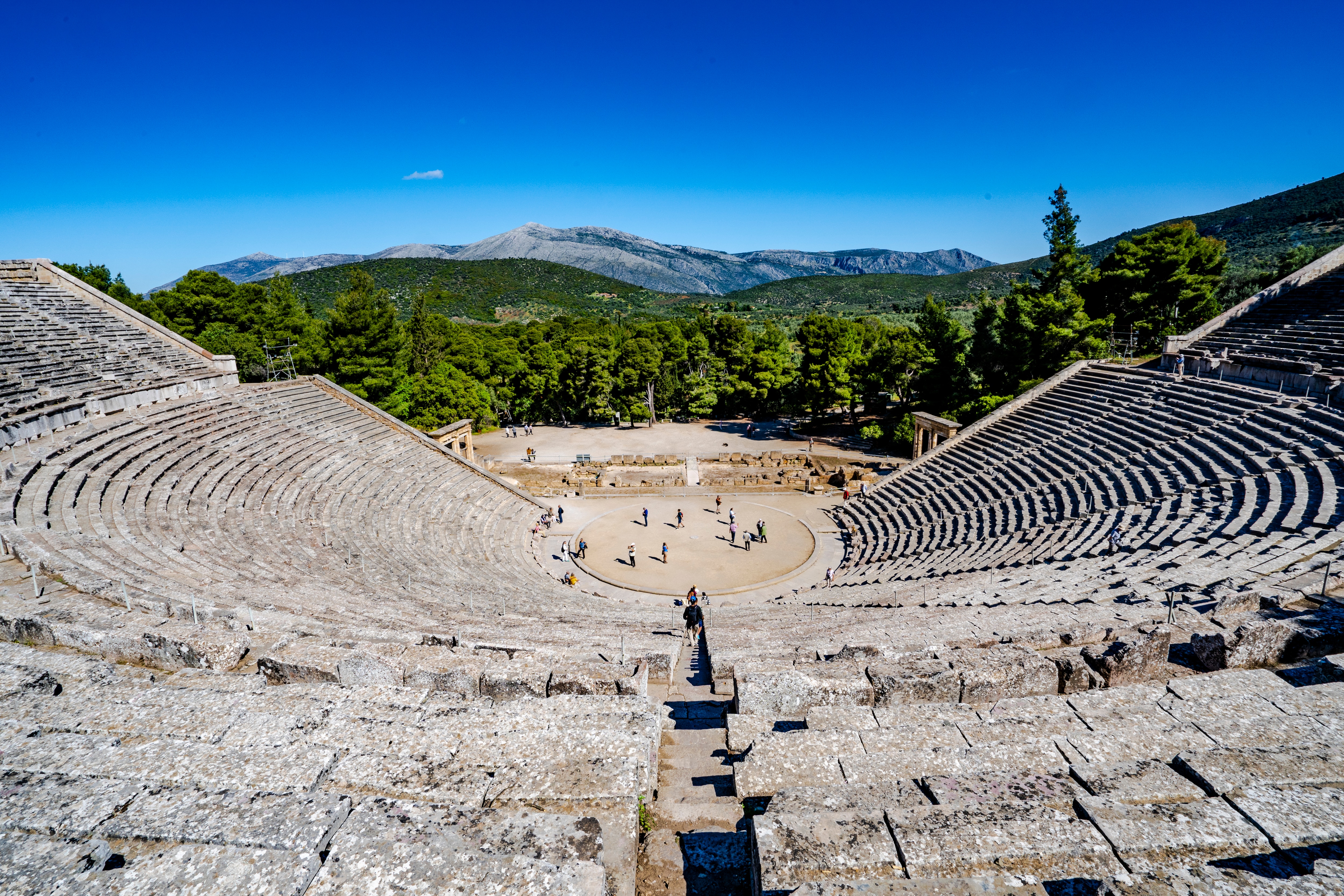

Road trip idea: Olympia
Renowned for having housed the ancient Olympic Games nearly 3,000 years ago, Olympia is an ancient Greek site worth discovering in Peloponnese.
With your car rental you can drive to Corinth towards the city of Patras and then Pyrgos.
The first Olympic Games were organized in Olympia, in 778 BCE. These legendary sports competitions are named after the ancient town and were dedicated to Zeus.
The Olympic Games was one of the four Panhellenic Games held in ancient Greece. The other three competitions were, Pythian Games, organized in Delphi in honor of Apollo, Nemean Games, dedicated to Zeus and Heracles, these games took place in Nemea and Corinth, Isthmian Games, held in Isthmia and Sicyon in honor of Poseidon.
Like the modern Olympic Games, the ancient Pan-Hellenic Games were held every four years between June and August. The four-year period was called Olympiad and it's how the inhabitants measured time.
The most popular sports played during the Olympic Games included wrestling, javelin throw, discus throw, and chariot racing. Only men could enjoy the numerous sporting events since the athletes were always men and competed naked.
The Olympic Games were forbidden by Roman Emperor Theodosius in 393 CE. The modern Olympic Games were not re-established until 1896 and were held in the Panathenaic Stadium.
Nowadays, the Olympic flame is still lit up with the light from a parabolic mirror in Olympia before the Olympic Games commence.
Things to do in Olympia
Archaeological site: Visit the astonishing original stadium where the Olympic festival took place every four years. The area also houses the remains of the Temple of Zeus, the studio of Phidias, the gym where the athletes would train before the tournament, and a lot of other interesting remains.
Archaeological Museum of Olympia: This museum displays the numerous relics found in the archaeological site. It's considered one of the best museums in Greece. The museum’s highlights are the debris from the Temple of Zeus.
Museum of the History of the Olympic Games: Although it's not very visited, this museum features items, mosaics, and paintings that express the importance of the ancient sporting competition.
Olympia is also home to the Museum of the Modern Olympic Games, which displays various medals, but we don't necessarily recommend this museum, there are others that are more interesting.
